Women in Iroquois History
Image: Jigonsaseh
Head Clan Mother of the Iroquois
The Iroquois were one of the most powerful Indian races, controlling land all the way down the eastern seaboard of North America and several hundred miles inland. A woman’s place in Iroquois culture was very different from that in European cultures. Iroquois women enjoyed social equality and respect that was not shared by colonial American women.
The Iroquois Confederacy was composed of five different tribes, who banded together shortly before European contact. The tribes of the Iroquois Confederacy and other Northern Iroquoian-speaking peoples, including the Huron, lived in the region including what is now New York State and the Great Lakes area.
Keepers of Culture
In the Iroquois community, women were the keepers of culture. They were responsible for defining the political, social, spiritual, and economic norms of the tribe. Iroquois society was matrilineal, meaning descent was traced through the mother rather than through the father, as it was in colonial society. While Iroquois sachems (chiefs) were men, women nominated them and made sure they fulfilled their responsibilities.
Homes
The Iroquois lived in small villages built on high ground surrounded by a tall wooden wall. Outside the wall were fields for farming. Inside the wall were rows of buildings. These buildings were Iroquois homes, known as wigwams and longhouses.
A wigwam was a round shaped structure made out of bent tree branches that were covered with layers of bark and dried grass. In the center of the structures were small holes, so the smoke could escape from the fire that burned inside the wigwam.
Longhouses got their name because they were longer than they were wide. These one-story structures ranged from twenty-five to one hundred and fifty feet long and were only twenty feet wide. Along the center aisle of the longhouse were three or four fireplaces, usually lined with small stones called fieldstones.
Each longhouse had multiple families living in it, and held anywhere from thirty to sixty people. On each side of the center hallway were quarters for each family. There were low platforms to sleep on and high ones to store goods, baskets, and pelts. Either bark or skins separated each quarters.
The women ran the longhouses, and owned all the normal things of everyday life such as blankets (skins), cooking utensils, and farming tools. A longhouse was usually occupied by one clan, with the eldest and/or most respected woman of that clan ruling it as Clan Mother.
Land Ownership
The tribe owned all lands, but gave out tracts to the different clans for further distribution among households. The land would be redistributed among the households every few years, and a clan could request a redistribution of tracts when the Clan Mothers’ Council gathered. Clans that abused their land or didn’t take care of it would be warned and eventually punished by the Clan Mothers’ Council by having the land redistributed to another clan.
Farming
The Iroquois were an agricultural people, and the women owned the land and tended the crops. The men prepared the ground for planting, and the women grew the Three Sisters – corn, beans and squash. Corn was an important crop to the Iroquois. They had over fifty ways of cooking corn, including the most popular, corncakes. Corn was raised in many colors and several varieties.
Corn was also used in other ways besides food. Cornhusks were used to make dolls, rope, twine, kindling, and filling for pillows. The corncob was used as a bottle stopper, a scrubbing brush, and fuel for smoking meats. The stalks were used for beanpoles.
The Iroquois women used the hill planting method, by placing a handful of corn kernels in a hole in the ground. As the corn grew, they mounded soil around it. This created a small hill that was one foot tall and two feet wide. These hills were set up in rows only one step apart.
The Iroquois grew many types of beans, including kidney beans, pea beans, and others. The squash they grew included pumpkins and melons, too. The women sometimes used a method known as inter-planting, where all three crops were grown in the same area.
Gathering
The Iroquois greatly depended on the environment. Surrounded by the forest, women and their children helped provide food by gathering wild fruits, vegetables, and nuts. They picked blueberries, strawberries, cherries, and wild plums. In areas around the Great Lakes, Iroquois women gathered wild rice during the rainy season. During the winter, many tapped trees to get maple sugar. In the springtime, they stirred the syrup over an open fire, and over time it turned to sugar.
Clothing
All Iroquois clothing was handmade by the women of the tribe. They dried and tanned the skin, a process that changed the animal skin to leather. Once tanned, they cut the buckskins into patterns for clothing, then sewed the pelts together with a deer bone needle and thread from deer sinew.
Women dressed in long skirts that were decorated with beads and dyed porcupine quills. In colder weather, they wore leggings underneath to keep warm. On top, they wore deerskin vests and decorative fur capes. In the summer months, the women wore light skirts of woven grass. Girls wore their hair in two braids. Once married, she wore her hair in one braid tied with wedding ribbon.
Children
Women had many responsibilities – probably the most important one was having children to ensure the future of their tribe. Any children born into the family belonged to the mother’s clan, and they were educated by their mother’s relatives.
Besides performing the normal household functions of producing, preserving and preparing food and clothing for the family and taking care of the children, Iroquois women participated in many activities commonly reserved for men. They gambled, belonged to medicine societies (spiritual associations), and participated in political ceremonies.
Tribal Council
Tribal Council was dominated by male speakers, but the women decided which men should be speakers. If the chosen man expressed opinions that clashed with those of the Womens’ Council, they could replace him with someone who more closely represented their views. If the Tribal Council took a course of action that the women disagreed with, such as a raid, the women might simply refuse to give them any food for the journey.
European Contact
Contact with Europeans in the early 1600s had a profound impact on the economy of the Iroquois. At first, they became important trading partners, but the expansion of European settlement upset the balance of the Iroquois economy. By 1800, the Iroquois had been confined to reservations, and they had to adapt their traditional economic system.
How Iroquois Women Inspired 19th Century Feminists
How did our 19th century foremothers get the vision and courage to demand a better life when they were surrounded by voices telling them the stifling existence they led was the only one possible? Woman was created to be subordinate to man, the church thundered, and science nodded its approval that God’s way was nature’s way as well.
Common law based itself upon church law, and the “two shall become one and the one is the man” of Christianity became the non-existence of married women under the law. Women could not vote, own property, control their own wages, or have any say over their bodies or the children they birthed. Unmarried women were unnatural since they were not under the control of a husband, and fared no better under their fathers’ authority.
“The assertion that women have always been physically inferior to men, and consequently have always been held in a subject condition, has been universally believed,” Elizabeth Cady Stanton wrote. “This view has furnished the opponents to woman’s emancipation their chief arguments for holding her in bondage.”
With this universal view of women in place, one might wonder how Stanton and other early feminists were inspired to imagine the possibility of a more equal society. That inspiration came from contemporary women who lived very different lives from theirs, the women of the six Iroquois nations – Seneca, Cayuga, Onondaga, Oneida, Mohawk, and Tuscarora – the Haudenosaunee, as they called themselves.
Lucretia Mott saw this world in practice when she and her husband visited the Seneca in the summer of 1848. She watched women who had equal responsibilities with men in all aspects of their lives – familial, spiritual, governmental, and economical. At that time, Seneca women were deeply involved in the decision of whether or not to drop their traditional clan system of government and adopt the constitutional form insisted upon by the Quakers.
While the Cattaraugus Seneca finally did accept the United States model, they refused to accept the element of male dominance. They placed in their constitution that no treaty would be valid without the approval of three-fourths of the “mothers of the nation.”
With this in mind, Mott traveled to visit friends in western New York where they planned the first women’s rights convention in Seneca Falls. Beyond equal suffrage, Elizabeth Cady Stanton marveled that “the women were the great power among the clan,” and “the original nomination of the chiefs also always rested with the women.”
Matilda Joslyn Gage, Stanton’s equally brilliant contemporary, described the governmental structure in more detail. “Division of power between the sexes in this Indian republic was nearly equal. Although the principal chief of the confederacy was a man, descent ran through the female line, the sister of the chief possessing the power of nominating his successor.”
Gage wrote that the U.S. form of government was borrowed from that of the Six Nations, and thus “the modern world [is] indebted for its first conception of inherent rights, natural equality of condition, and the establishment of a civilized government upon this basis” to the Iroquois.
Stanton and Gage came to believe that every existing institution of western civilization – family, capitalism, church, and state – rested on the oppression of women, and each would have to be destroyed in their existing form before women would be free. They knew these institutions were neither inherent nor natural, for they had seen an alternative in action.
Divorce, Iroquois style, must have looked like a vision to Stanton, who had been called a heretic for arguing that women should have the right to leave loveless or dangerous marriages. This model of indigenous women living in a world in which they had status, authority and dignity gave our feminist foremothers a vision of how they could transform their world, along with the sure knowledge that it could be done without upsetting either nature or God.
SOURCES
Iroquois Woman
Economy of the Iroquois
The Role of Women in Iroquois Culture
The Roles of Women in the Iroquois Tribe
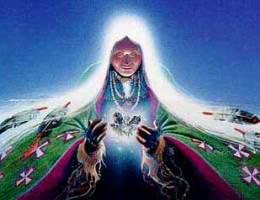
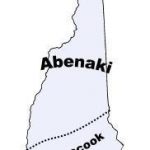
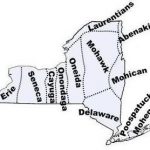
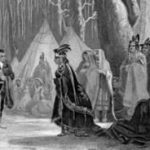


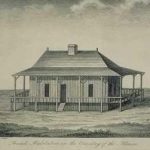
Thank you for honoring our history and people, especially our women leaders. Respectfully we are not Iroquois. In Kanienkehaka (Mohawk) dialect we are Rotinnosoni and in Onondaga we are Haudenosaunee. Iroquois is a foreign word; an amalgamation of French and Algonquin I believe which the English borrowed. Niawen’kowa Roseanne Freese
So inspiring.
Good for them. Women should be strong helpmates to the males. I would not mind having this type of mate and I am Cherokee.
Hmmmm, women and men should be mutual helpmates. Balance is the key. Woman make just as good leaders as men. maybe more so, just look at the countries that have coped with Covid best, yes all have women at the top
I really have never heard that Iroquois were seen as the controlling land all the way down the eastern seaboard of North America! It was Algonquian land along the eastern seaboard if we wish to respect the plight of the Algonquians & tell THAT truth! I mean it was only Algonquians who met the first British colonizers hence the whole Pocahontus episode of the story. Her FATHER Chief Powhatan was the chief of all that territory & it is HE who the British had to deal with….well of course until the British found out that the enemy of my enemy is my friendly next door neighbors the Iroquois right? So as og TODAY the popular narrative is that Algonquians are CANADIAN Indians and NOT ever part of the US conquered area and then we read a piece like this and it FURTHERS that rather that not quite accurate narrative unfortunately.